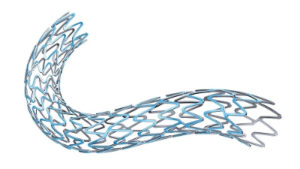
Olivier Varenne (Hôpital Cochin, Assistance Publique—Hôpitaux De Paris, Paris, France) reported that the strategy of using bare metal stents to enable a shorter duration of dual antiplatelet therapy (DAPT) in older patients should no longer be used. He explained that new data showed that drug-eluting stents provide a net clinical benefit over bare metal stents in patients aged 75 or older.
Speaking at the 2017 Transcatheter Cardiovascular Therapeutics (TCT) meeting (29 October–2 November, Denver, USA), Varenne commented that he and his colleagues conducted the SENIOR trial because, prior to this study, older patients have been “poorly represented” in DAPT studies. As a result of this under-representation, “no recommendation on DAPT duration can be made for this specific population”. He added that, given they often have comorbidities that put them at high risk of bleeding, older patients frequently undergo percutaneous coronary intervention (PCI) with a bare metal stent—rather than a drug-eluting stent—to allow a shorter course of DAPT.
In SENIOR, patients aged 75 years or older were randomised to undergo PCI with a bare metal stent (604) or with an everolimus-eluting stent with a biodegradable polymer (596; Synergy, Boston Scientific). The primary endpoint was the one-year rate of major adverse cardiac cerebrovascular events (MACCE); a composite of all-cause mortality, non-fatal myocardial infarction, stroke, and ischaemia-driven target lesion revascularisation.
Of note, Varenne commented, DAPT duration was not randomised but based on clinical presentations. Therefore, unstable patients were prescribed DAPT for six months and stable patients were prescribed DAPT for one month. Approximately, in each group, 45% of patients had unstable disease—with about 10% having ST-segment elevation myocardial infarction (STEMI) and 25% having non-STEMI—55% had stable disease.
At one year, the rate of the primary endpoint was significantly lower in the Synergy group: 11.6% vs. 16.4% for the bare metal stent group (p=0.016). According to Varenne, this result represented a 29% relative risk reduction and the number needed to treat to prevent one event with Synergy was 21.

He stated that the main driver of the reduction in MACCE was a “highly significant” reduction ischaemia-driven target lesion revascularisation with Synergy (1.7% vs. 5.9% for bare metal stents; p=0.0002), which was a “dramatic 71% reduction in relative risk” and a 4.2% reduction in absolute risk.
There were no significant differences, including bleeding, in the safety endpoints between groups.
However, stent thrombosis was numerically lower in the Synergy group (0.5% vs. 1.4%, respectively; p=0.13). When the MACCE result and the Bleeding Academic Research Consortium (BARC) 2-5 result was combined, Synergy was associated with a favourable net clinical benefit—14.% vs. 19.2% for bare metal stents; log-rank test p=0.0239).
Summing up the data, Varenne noted that “PCI with a contemporary thin-strut drug-eluting stent is more effective than and is as safe as bare metal stents in elderly patients with coronary artery disease on a short DAPT tailored to their clinical presentation”. He added: “Bare metal stents should no longer be used as a strategy to reduce DAPT duration in elderly patients.” This view is similar to recommendation of the recent European Society of Cardiology focused DAPT update, which advised clinical presentation and not stent type should determine the duration of DAPT.
In the discussion session after Varenne’s presentation, Martin Leon (Columbia University Medical Center / New York-Presbyterian Hospital, New York, USA) stated the SENIOR was the “final coffin for bare metal stents” and he could not “think of any indication for using bare metal stents aside from those of cost considerations”. “They should be relegated to the past because they have very little role in environments in which drug-eluting stents are cost efficient,” Leon observed.
Confirming what he said at TCT, Varenne told Cardiovascular News: “Drug-eluting stents and reduced duration of DAPT should be preferred over bare metal stents with similar DAPT in elderly patients with coronary artery disease.”
The SENIOR study was simultaneously published in The Lancet.












